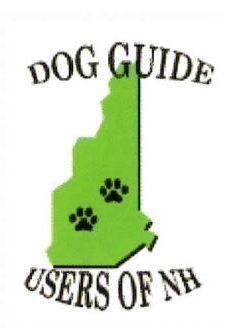
We are reaching out to let you know that the Department of Transportation has issued final regulations on traveling by air with service animals. Before we go into any detail about what the regulations mean for guide dog handlers, we want to assure you that you should not expect any changes right away. These regulations were issued on December 2 but have not yet been published in the federal Register, which is where federal regulations are officially published after they are finalized. The regulations will not take effect until 30 days from the date they are published in the Federal Register. After that time, airlines must make any necessary adjustments to their policies to comply with the regulations.
Here is what the new regulations will mean for air travelers with guide dogs once they are effective:
- Only dogs are service animals under the new regulations. A service animal is defined as a dog, regardless of breed or type, that is individually trained to do work or perform tasks for the benefit of a qualified person with a disability. This means that emotional support animals are no longer considered to be service animals under the new regulations.
- The new regulations do allow airlines to require people traveling with service animals to submit a form attesting to their dog’s good behavior, health and training. If airlines choose to require the form, they must use a standard form developed by DOT. It is called the Service Animal Air Transportation Form. The form is completed and signed by the service animal handler.
- Airlines are allowed to require passengers to submit the Air Transportation Form 48 hours in advance of a flight. Airlines are required to have an accessible version of the form on their web site and to allow submission of the form electronically or by hard copy. If the reservation is made less than 48 hours before the flight, airlines can require the passenger to submit the form at the gate.
- The form must be current. This means it has to be completed on or after the date the ticket was purchased. Airlines can require the form for each round trip but not more than once in a trip.
- If a service animal handler is traveling on a flight that is 8 hours or longer, airlines can require them to complete a form stating that the animal will not need to relieve during the flight or that relieving can be managed in a safe and sanitary way. The big difference in this part of the rule is that airlines cannot develop their own forms and must use a standard form created by DOT.
- Airlines are not allowed to require people with service animals to check in at the airport. They must be allowed to check in online if they choose to do so.
- Airlines can limit the number of service animals traveling with a person with a disability to two. This means no more than two animals per person. There is no restriction on the number of service animals per flight.
- Airlines can require service animals to fit within the passenger’s foot space or on their lap. However, airlines are still required to accommodate passengers with large service animals that cannot fit in the foot space by offering another seat in the same class of service if available.
- Airlines are allowed to require that service animals be harnessed, leashed, or tethered at all times in the airport and on the aircraft. This does not present any real change for guide dog handlers, as the harness can be removed to fit the dog under the seat with the leash remaining on.
- Airlines are allowed to charge service animal handlers for damages caused by the animal if they would charge passengers without service animals for similar damage.
- As in the pre-existing regulations, airlines are allowed to refuse transportation to animals that are aggressive or pose a direct threat.
This email is intended to summarize and provide you with the most important points about the regulations. If you want to read the final rule, you can do so by going to this link: https://www.transportation.gov/briefing-room/us-department-transportation-announces-final-rule-traveling-air-service-animals
